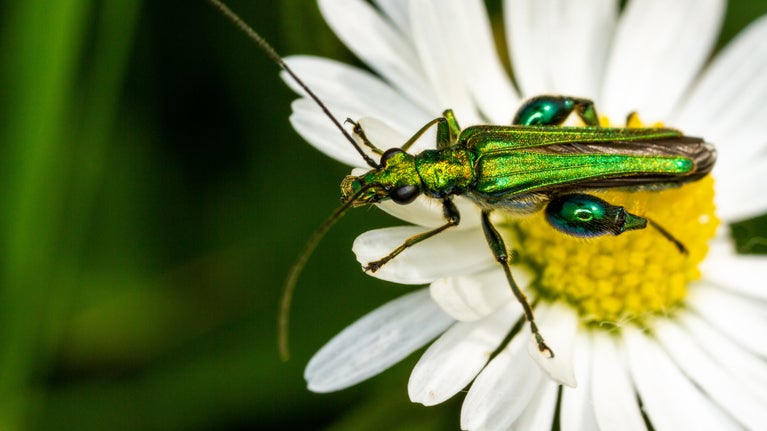
Get closer to wildlife
Discover tips for spotting mammals, birds and insects each season and learn about the range of wildlife at the places we look after.

Meadows in the UK remain home to a rich tapestry of wildlife, even though 97 per cent of wildflower meadows have been lost since the 1930s. Matthew Oates, the National Trust’s specialist butterfly volunteer and nature expert, shares seven wonderful things to look out for in meadows, along with a handy guide to identifying wildflowers.
Every year is a new summer of love for Britain’s insects. One meadowland discovery to look out for is two mating insects perched on a leaf and locked together in a long embrace.
A walk through English grasslands on a warm day is often accompanied by the chirrup of a grasshopper. Follow the sound and you might find a meadow grasshopper hanging from a stalk, but you’ll need to look more carefully for its silent cousin, the common green. This grasshopper can be green to olive brown with white lines on the head, whilst the meadow grasshopper is usually green with a brown stripe down the back, although sometimes brown or plum in colour.

The relatively common marbled white butterfly is unmistakable with its striking black and white mosaic patterned wings that clearly distinguish it from other species. It can be found in large colonies across western Britain.
Another species to look out for is the meadow brown butterfly which is often seen in large groups. Its wings are a dull, orangey brown colour with a black eyespot on the wingtips. Interestingly, it even flies on gloomier days when other butterflies don’t.

You can find several different species of these day-flying moths in meadows, and they’re all a vivid red and black colour with narrow wings and fat bodies.
This delicate wildflower spreads in drifts across meadowland. Common spotted orchids are usually no more than 15cm high and the most common colours are whites and pinks. Crouch down to take a closer look at their beautiful blotchy leaves.
Common knapweed has an almost thistle-like purple-pink flower. It’s a favourite of many different butterflies including the marbled white and meadow brown. Its slightly rarer cousin, the greater knapweed, has even taller purple-pink flowers and is also popular with many species of butterfly.
Wildflowers bring vibrant colour to meadows, grasslands and verges, and play a vital role in supporting bees, butterflies and other pollinators. Download this handy guide that will help you identify the flowers you see when you're out in the countryside.

Discover tips for spotting mammals, birds and insects each season and learn about the range of wildlife at the places we look after.
Learn how to spot red squirrels, the best times to see them and how to tell them apart from grey squirrels.

Take a look at our guidelines for responsible seal spotting and top tips for seal watching.

Holly is one of the UK's most familiar native evergreens and has decorated gardens and homes for centuries. Find out more about this versatile plant, from its pagan roots to its use in furniture.

If you’d like to see more birds in your outdoor space, discover how you can make a simple bird feeder with just a few items and ingredients.
